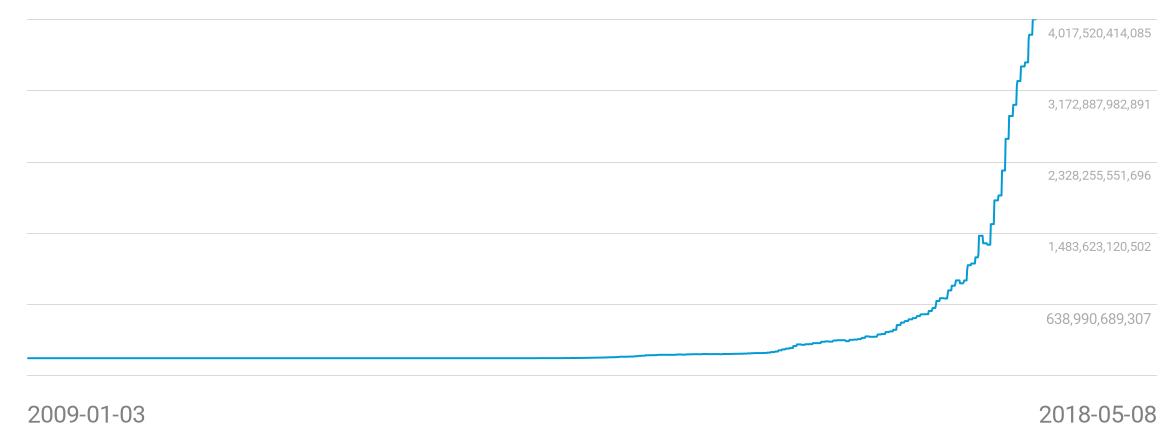Gordon Moore, the co-founder of Fairchild Semiconductor and Intel, observed that the number of components per electrical integrated circuit would grow by at least a factor of two for every year. Back in 1965, he also projected that this rate of growth would continue for at least another decade. Over the years, he revised the forecast to doubling every two years. This observation was geared toward the number of transistors in a dense integrated circuit and has been used in the semiconductor industry to set targets for research and development. But it isn't only limited to the chip-manufacturing field; it has also been used to make observations about technological and social change, as well as productivity and economic growth.
Moore's law has been adapted and applied to approximate the rate of change in network capacity, pixels in images, storage device size, and much more. Blockchain is a technology of the future that might have to overcome multiple limitations in order to achieve healthy long-term development. Moore's law would help in deciding the complexity required for any blockchain application so that the application doesn't have to struggle with future scalability issues.
Since every node in the network maintains the complete blockchain ledger, blockchain data keeps increasing in size as time goes on. This raises some concerns regarding scalability, as each node needs to maintain the blockchain locally (such is the nature of the distributed network). Satoshi Nakamoto had mentioned that the growth of the block header size would be around 4.2 MB per year, and Moore's law would guarantee growth of at least 1.2 GB RAM (in 2008) per year, which should not pose any problems for block storage even if they are maintained in node memory.
Public blockchains, such as Bitcoin, have to deal with the hash rate of the hardware for their consensus algorithms. Bitcoin-mining hardware has been able to keep up with Moore's law, providing the required hash rate in accordance with the growing difficulty rate. However, the future of Bitcoin mining relies on Moore's law and the hardware being able to keep up with the difficulty without causing much loss to the miners:


